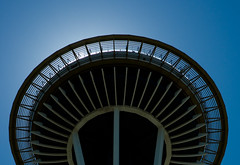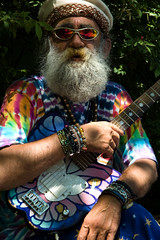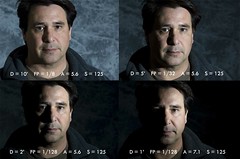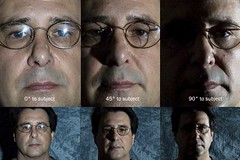Whatever happened to Bobby Sherman?
I was in Seattle earlier this week attending a web design conference with about 400 other geeks from all over the place. Web Design World was held at the Marriot on the waterfront.
I had never been to Seattle. I had never been to a web design conference. Both were extraordinary. The only thing awry was the weather. It didn't rain! Not one drop. In fact, I had checked the weather forecast prior to my arrival. It was to be sunny and in the 70's while back home it was going to be sunny, hot and in the 90's. What actually happened ... sunny and 70's back home, sunny and hot in Seattle!
My day's were pretty much filled with conference but, I woke up early and took some shots, shot a sunset from the pier of the Seattle Aquarium on Monday night and took a couple of hours from the conference on Tuesday afternoon.
I just took my camera with my trusty 18-70mm f/3-4.5. This was a great lens to walk with. It's fast, sharp (I tried to keep the aperture around f/8.0) and light weight. I walked up toward the Space Needle ... did you know that thing was built in 1962. It's amazing that it's been around that long.
I got some great shots along the way and around the Space Needle. The one on the left was taken when the sun was really high in the ski. You can see it casting an eclipse effect, halo around the capsule.
Just under the Space Needle nested in the landscape I met Earl. Well, I call him Earl because I forgot to ask him his name.
Anyway, I had snapped a quick shot of Earl and thanked him by throwing a buck into the colander he was using to hold his street money. We got to chatting and he asked where I was from and what I was doing in Seattle. I told him I was here for a web design conference expecting the conversation to be over quickly. Not so, oh Stop Bath breath!
Earl proceeded to inform me that he was a Photoshop expert, had been working with Photoshop since its inception and launched into a lesson about the Photoshop interface instructing me on the exciting use of layers and the different blending modes. He was great.
I wandered down 5th Avenue to the retail district catching this shot of a kid passing out flyers in support of the LaRouche Political Action Committee whatever that is. It was just a good photo opp.
It was about here where I turned back toward the waterfront and ended up at the Public Market Center ... that famous farmers market ... where they throw the fish back and forth. A couple of times I thought I saw Bobby Sherman. I needed a Starbucks.
One of the things I worked on today was purposely stay away from 3D Matrix metering and use center-weighted. I found that, in the light of midday sun, I was able to get the exposure I wanted more accurately. I kept the camera in Aperture Priority (A) mode and ISO 200 for the whole walk although I raised the ISO to 400 and popped the on-board flash when I got inside the market.
More images Seattle set on Flickr.
i shoot nikon





